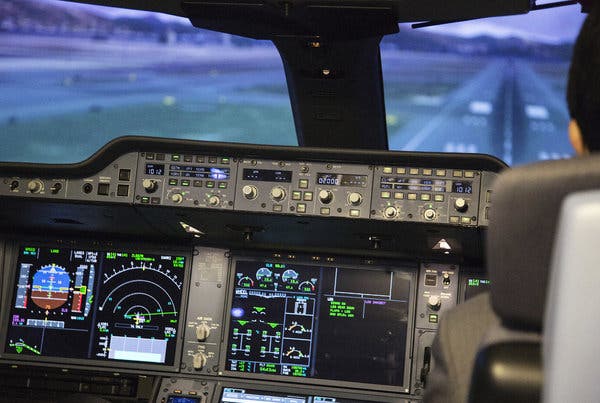An autopilot is a flight control system that allows a pilot to fly an airplane without continuous hands-on control of the airplane. It allows the pilot to focus on higher-order tasks such as navigating, communicating with air traffic control, planning for weather contingencies and rerouting associated with any kind of emergency circumstance.

In the early days of aviation, pilots had to control the aircraft all the time to fly safely. As aircraft range increased and the flight durations increased, it became a serious problem for the pilots to continuously control the aircraft.

Autopilot systems have been around since the early 20th century. According to Wikipedia, the first functional autopilot system developed in 1912 by the electronics company Sperry Corporation had an autopilot system with a gyroscope, altitude, and operated elevators as well as rudders.

Autopilot in aircraft with more than twenty seats is generally made compulsory by international aviation rules and regulations. Autopilots in modern aircraft are three-axis and they control the aircraft during climbs, descents, cruise, and approach to landing. Some even integrate an auto-throttle function that automatically controls engine thrust that makes auto landings possible. For further automatic control, flight management systems have been developed. Through the use of computers, an entire flight profile can be programmed ahead of time allowing the pilot to supervise its execution. An FMS computer coordinates nearly every aspect of a flight, including the autopilot and autothrottle systems, navigation route selection, fuel management schemes, and more.
Control Wheel Steering(CWS) is an option midway between fully automated flight and manual flying. Although CWS is less used in modern airliners, it is still a function on many aircraft today. CWS gives stability in pitch and roll. In this system, the limitations of the aircraft can be observed by the flight computer, and the pilot cannot steer the aircraft past these limits.

The hardware of an autopilot varies with implementation but is generally designed according to the need and reliability of the aircraft. Software and hardware in an autopilot are put to extensive tests. Some autopilots also use design diversity. In this safety feature, each computer will run software created by different engineering teams(to avoid similar mistakes), often being programmed in different programming languages. Stability Augmentation System (SAS) is another type of automatic flight control system; in case the aircraft does not possess the stability characteristics as per the requirements of flying and handling qualities then stability augmentation system is used to artificially augment the stability of the aircraft. SAS can automatically stabilize the aircraft in one or more axes.
Disadvantages of the Autopilot: 1) Pilots should maintain manual flying skills. The competent pilots should always be prepared to fly manually in case of an autopilot failure. 2) Turbulence. The pilot’s operating handbook (POH) prohibits the use of altitude hold function during moderate or severe turbulence. Some autopilots disengage when certain limits are encountered due to turbulence. 3) Minimum altitude. Autopilots should only be used above specific altitude above the ground level. Pilots should refer to the flight manual such that the aircraft does not operate outside the specified limits. 4) Possible malfunction. Whenever the pilot observes an unusual behavior from the autopilot, he or she should disengage the autopilot immediately.
Autopilot has evolved over the years but it cannot replace the pilots. Therefore at least one pilot is required in the cockpit.